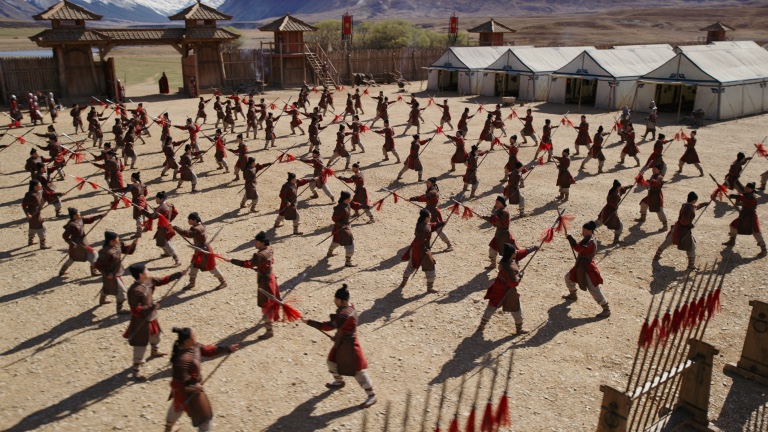
“It always starts with the script,” maintains production designer Jess Gonchor, and he’s had some good ones to start with, including the one for No Country For Old Men, which netted him an Art Directors Guild Award for Excellence in Production Design. Its follow up, Burn After Reading, gained him a nomination in the same category, and the fact that both of those scripts— and the one that currently makes him one of this year’s contenders—were written by the Coen Brothers, is no coincidence.
The Brothers are known for building a “repertory company” of below-the-line crafts folk who can intuitively grasp their off-center sensibilities.
And so it was with the extremely off-centered A Serious Man, which is a film about an ordinary man, (or perhaps a modern Job, if you like your Biblical allusions), who imagines his world—and his life—are centered. But it all unravels as quickly as if struck by a kind of whirlwind from which heavenly voices emanated.
But whirlwinds were actually a key consideration for Gonchor, who was charged with recreating the kind of mid-20th century suburb in which the Coen Bros. grew up, and in which their film is set—specifically, a new suburb in the flat expanses of Minnesota.
Gonchor says he wanted “the start of suburbia,” but all those middle class ’burbs are “now overgrown.” But then nature helped, as part of an effort that Gonchor describes as “75 percent location work,” when he found a “town where a tornado blew through 10 years before.”
The result was that there were now vistas where there had once been mature trees—an effort admittedly abetted by Gonchor and company, who pulled up 30 more trees, (being careful to replant when they were through), and a lot of fences, to create a little houses-on-the-prairie look for the neighborhood.
New grass was sown and they “put sod on top of two double driveways” to augment the feel of endless lawns.
The neighbors “loved it,” and while they “came out every night” to watch filming (“they were into it,”) paint had to be re-re-coated, and fences re-installed when the company left, since, Gonchor notes, “it’s also 2009.”
But not for the titular Serious Man, Larry Gopnik, played by actor Michael Stuhlbarg. When his world starts unraveling—his tenuretrack physics professorship could potentially get derailed, and his wife announces simultaneously that not only is the marriage rife with problems, but she’s found a new mate to help redress those problems—he returns to his Jewish faith. Or tries to.
And that particular wandering in the suburban desert provided another tier to Gonchor’s design. “A big thing for us was the synagogue—what is the look of a synagogue?”
While the Coens attended one that was built in a classic, pre-war style, Gonchor and his directors decided they wanted the Synagogue—and the college where the attempts at understanding the universe take place—to all be post-war and ’50s/’60s moderne.
But finding the right shul wasn’t enough—it had to be decorated, too, especially as Gopnik worked his way “upstream” from the assistant rabbi to the Emeritus Rabbi, Marshak, whose impenetrable office is like a multi-layered repository of Jewish history since the Hasidic era.
“The response f rom the Jewish community in Minneapolis,” Gonchor asserts, was both amazing and gratifying, as “local temples,” from both the area and the era, let them peruse “the most amazing art and period artifacts.”
Gonchor got to borrow artwork, Torah scrolls and more from the “trophy cases” of the local temples, creating a visual palette where “everything was upstaging everything else.”
But since the film moves steadily into dream-logic, this was the desired effect, down to the hidden Hebrew letters Gonchor inserted in a massive blackboard where Gopnik, frenetically trying to decode the meaning of the cosmos, and of life, covers an entire wall with figures and calculations.
Even the dream logic was “all there in the script,” says Gonchor. “I just enhanced it as best I could.”
He was off to do that for a fourth time with the Coens, for their remake of the Charles Portis’ western, True Grit.
Setting up camp in Austin, to shoot in Texas, it will be another kind of “plain” altogether.
Though Gonchor will doubtless find ways to fill it.
Previous Noms and Wins
2009: Nominated, Art Directors Guild Excellence in Production Design Award, Burn After Reading (with David Swayze, Deborah Jensen, Jeffrey McDonald, Tobin Ost, Nithya Shrinivasan, Gregory Hill, Alex Gorodetsky, and Nancy Haigh). 2008: Won, Art Directors Guild Excellence in Production Design Award, No Country For Old Men (with John P. Goldsmith and Deborah Jensen). 2004: Nominated, Art Directors Guild Excellence in Production Design Award, The Last Samurai (with Lilly Kilvert, Christopher Burian-Mohr, Kim Sinclair, Tristan Paris Bourne, Martha Johnston, Elizabeth Flaherty, Harry E. Otto, and John Berger).





